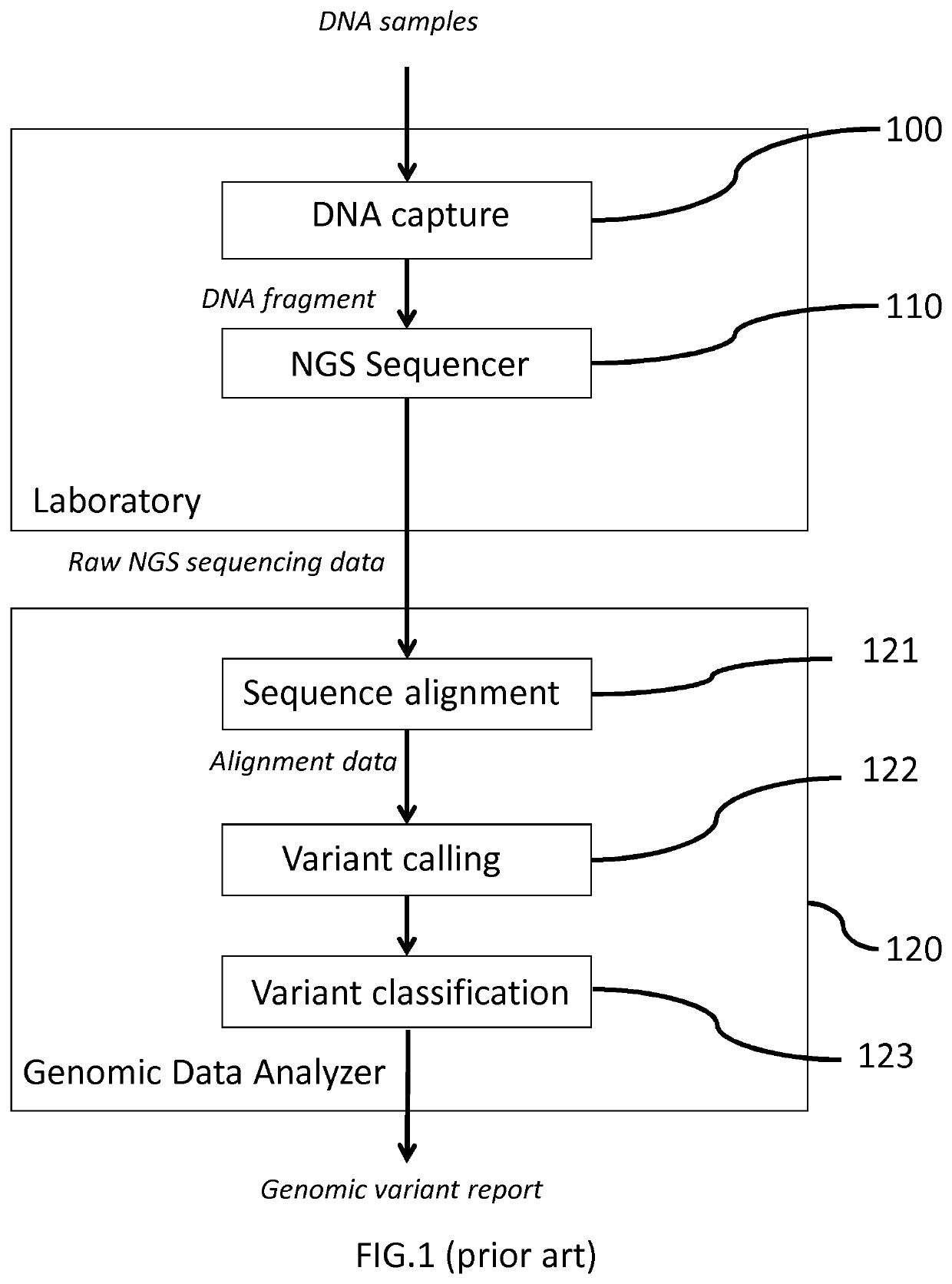Methods for detecting biallelic loss of function in next-generation sequencing genomic data
- Summary
- Abstract
- Description
- Claims
- Application Information
AI Technical Summary
Benefits of technology
Problems solved by technology
Method used
Image
Examples
Embodiment Construction
Next Generation Sequencing Analysis System
[0075]FIG. 1 shows an exemplary genomic analysis system comprising a DNA enrichment assay 100, a next generation sequencer 110 and a genomic data analyzer 120.
[0076]In a NGS laboratory, a pool of DNA samples is processed by the DNA enrichment assay 100 to generate a library of pooled amplicons (for amplicon-based enrichment) or fragments (for probe-based enrichment) as DNA fragments input to the next generation sequencer 110, each set of amplicons / fragments corresponding to a different sample. The number of amplicons / fragments is application dependent. In some genomic analysis experiments, target enrichment may require 150 primers to enrich 75 different regions to be targeted out of the sample genome, resulting in a set of 75 amplicons for each sample. The number of samples may also be adapted to the next-generation sequencing sequencer 110 parallel processing capability, for instance 48 samples in the form of a library of pooled amplicons m...
PUM
| Property | Measurement | Unit |
|---|---|---|
| Fraction | aaaaa | aaaaa |
| Responsivity | aaaaa | aaaaa |
| Purity | aaaaa | aaaaa |
Abstract
Description
Claims
Application Information
 Login to view more
Login to view more - R&D Engineer
- R&D Manager
- IP Professional
- Industry Leading Data Capabilities
- Powerful AI technology
- Patent DNA Extraction
Browse by: Latest US Patents, China's latest patents, Technical Efficacy Thesaurus, Application Domain, Technology Topic.
© 2024 PatSnap. All rights reserved.Legal|Privacy policy|Modern Slavery Act Transparency Statement|Sitemap



